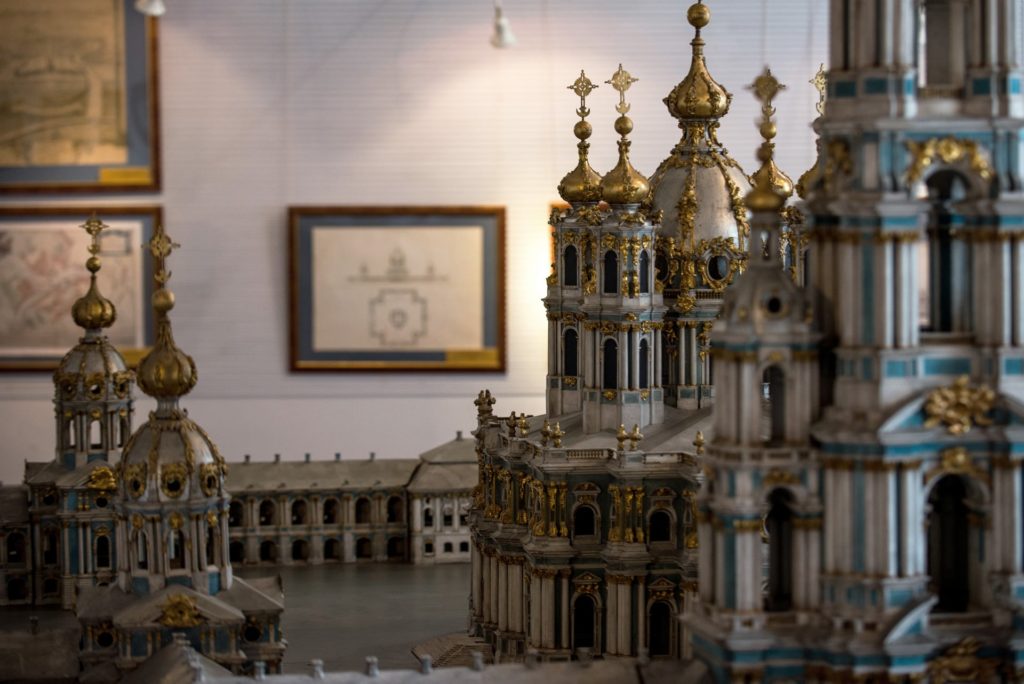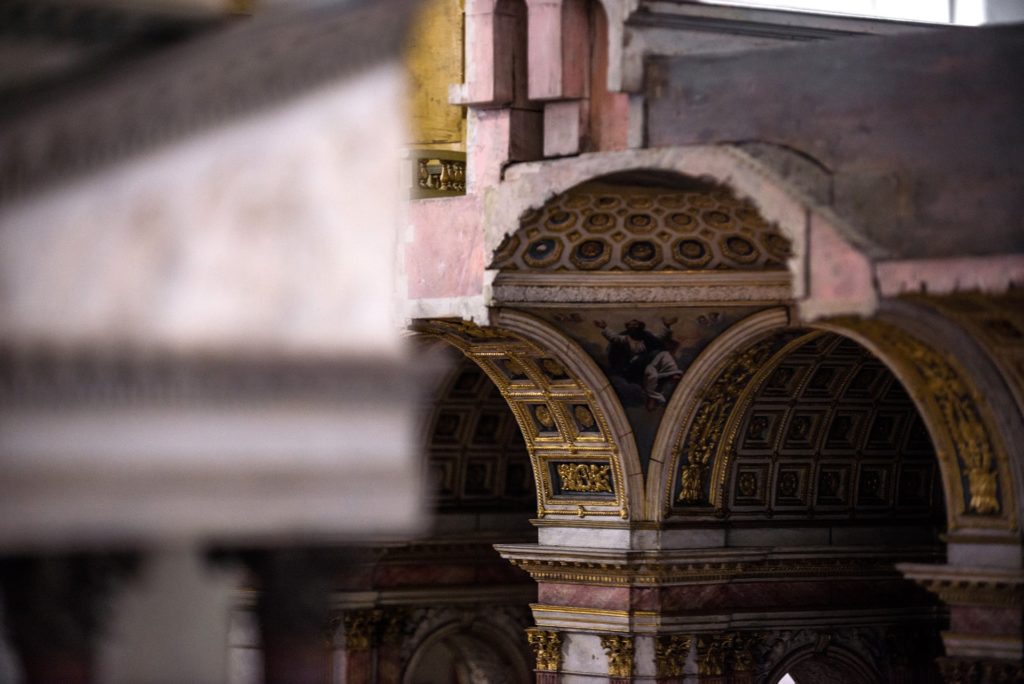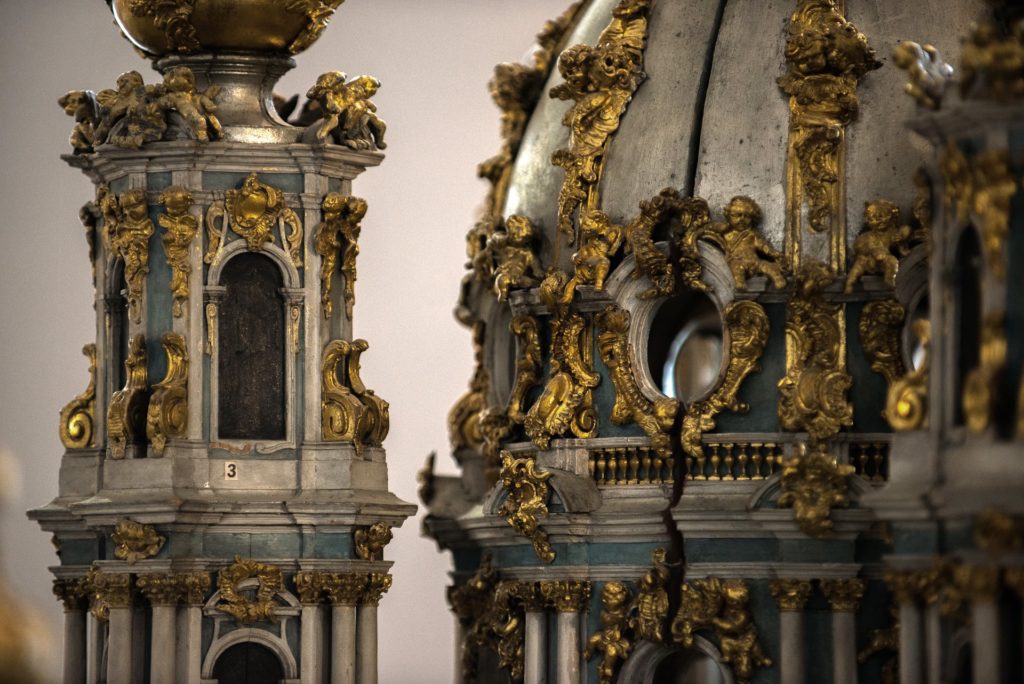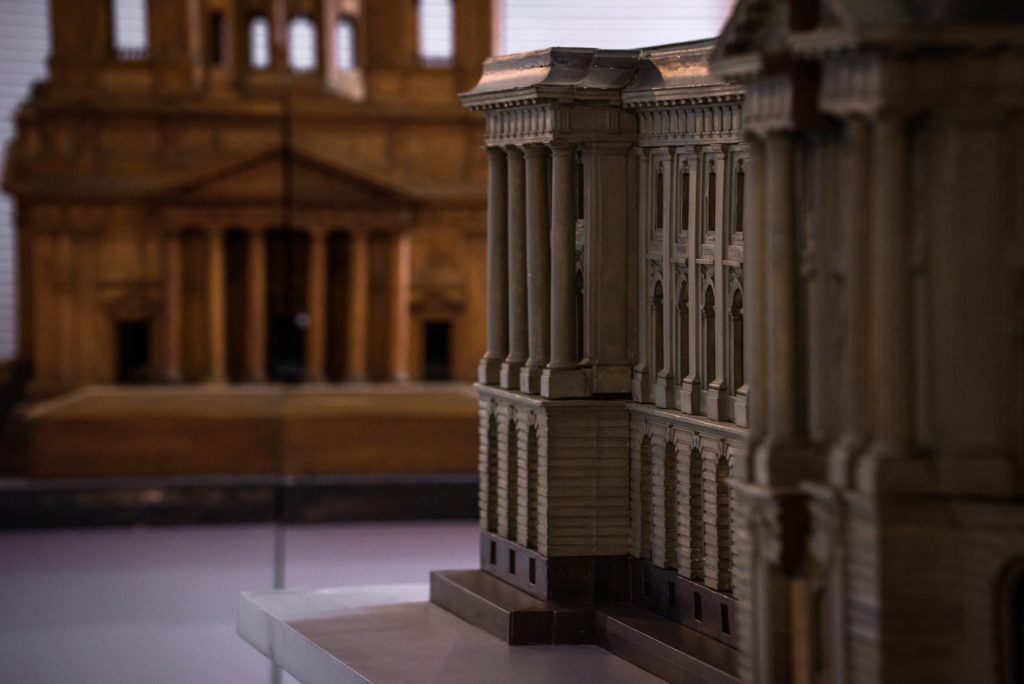Architectural Models and Drawings
Saint-Petersburg in architectural drawings and models.
XVIII-XIX centuries.
Despite the relatively small number of exhibits, the unique collection of architectural models, which dates back to the 18th century, is a gem among architectural assemblage.
The art of modeling has come to Russia from Europe. Starting from the Middle Ages cork models were widely used there as part of the process of architectural design, especially for complex constructions, enabling to view the full idea of the spatial composition of the future building, and also about its internal arrangement and decoration. When the building was finished, its model was usually kept there. Being works of art in their own right, the models in St Petersburg were handed over to the Academy of Arts “for the benefit of students”, by students meaning in particular the future architects who studied there along with painters, sculptors and engravers. This is how the world’s one and only collection of architectural design models came to be.

The exhibition begins with a model of the Voskresensky Novodevichy Convent, better known as Smolny due to its location on the site where tar (`smola` in Russian) used to be brewed for economic and military purposes. The project of the ensemble was created in 1747 by the great baroque master Francesco Bartolomeo Rastrelli (1700-1771), who harmoniously combined the features of European style and traditional motifs of Russian architecture.
The model of the Academy building shown at the exhibition is a vivid example of the classical style, and one of the first in Russian architecture. The building was designed in 1764 by two professors of the architectural faculty of the Academy (A. F. Kokorinov and G. -B. -M. De La Mothe).
The Holy Trinity Cathedral of the Alexander Nevsky Lavra was built in 1778-1790 by the outstanding Russian architect I. Starov (1745-1803) as a monument of strict Classicism. Unlike other exhibits of this collection, the model of the Trinity Cathedral was not painted, which gives the chance to appreciate the skill of the carvers who reconstructed the finest architectural details with great precision.
The Romantic period of Russian Classicism was reflected in the design of the Mikhailovsky Castle (1796-1801), the very idea of which implied a reference to the motifs of medieval European architecture. The model shows in detail the lavish decoration of its interior: the paintings imitate the coffering of the ceiling, the pink and lilac marble of the columns; the vaults and dome are decorated with paintings, and the walls are decorated with gilt stucco.
St. Isaac’s Cathedral, designed in 1768 by A. Rinaldi, could have been one of the most peculiar works of St Petersburg architecture, that combined features of baroque and classicism, but the preference was given to the project by O. Monferrand who built the existing cathedral on the on that site. Thus, the design model proves to be the most complete implementation of Rinaldi’s plan.
The model of the famous St. Isaac’s Cathedral, built to a design by O. Monferrand in 1818-1858, with all the accuracy represents the original author’s concept. Ten craftsmen worked to create this “magnificent and dapper toy”, according to the impression of a contemporary, but an impressive one.
A special place among other models belongs to the bronze representation of St. Peter’s Lutheran Church, the so-called Petrikirche, built in 1833-1838 on Nevsky Prospect by the outstanding architect A. Bryullov. This model is not an architectural design model; it was made in 1867 for the International Art and Industry Exhibition in Paris, as the engraved inscription on the rear façade testifies.
This short list is far from being comprehensive, but gives the idea of the main exhibits on display and allows to appreciate the uniqueness of this one-of-a-kind collection of design models. Apart from architectural models, the exhibition includes plans, drawings, and engravings that reveal the history of the creation and use of the monuments that are represented here.


